CPM Educational Program collaborates with grades 6–12 math teaching teams of any size to provide the student-centered education solution that classrooms need to promote student engagement and deep mathematical understanding. A nonprofit staffed with experienced teachers and built on over 35 years of experience, CPM guides educators as they support students’ problem solving, communication, collaboration, and sense making.
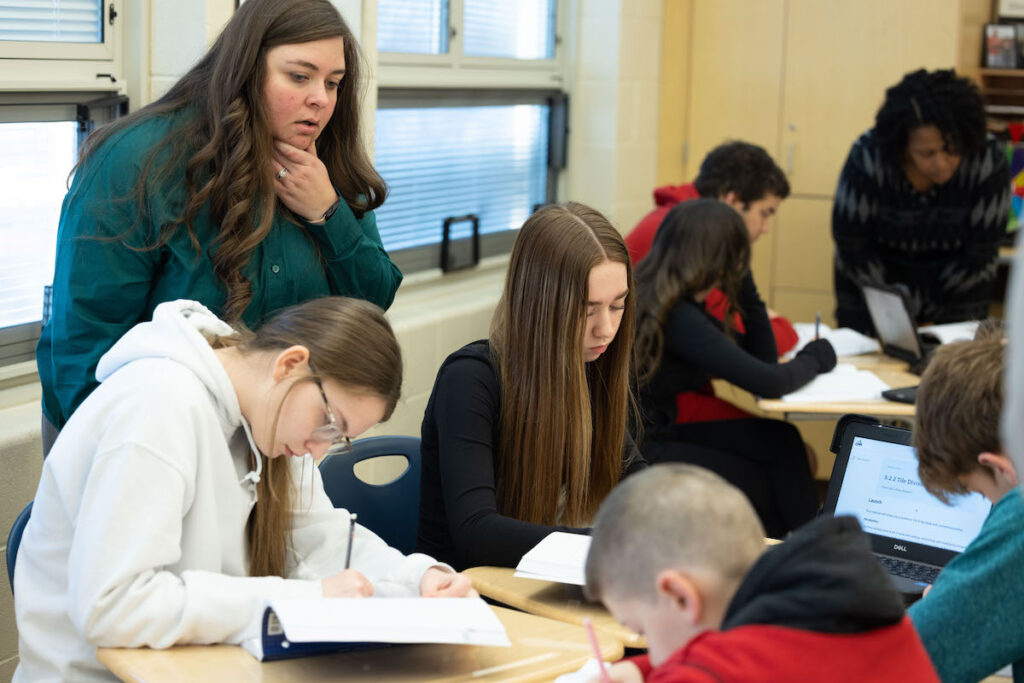
CPM envisions a world where mathematics is viewed as intriguing and useful, and is appreciated by all; where powerful mathematical thinking is an essential, universal, and desirable trait; and where people are empowered by mathematical problem solving and reasoning to solve the world’s problems.
CPM’s mission is to empower mathematics students and teachers through exemplary curriculum, professional development, and leadership. We recognize and foster teacher expertise and leadership in mathematics education. We engage all students in learning mathematics through problem solving, reasoning, and communication.
In a perfect world, every student would have the opportunity to learn math by being engaged and challenged. We are working to make this possible: More math for more students! CPM does not aspire to be the biggest publisher, but we do believe we are among the few who truly put student learning first.
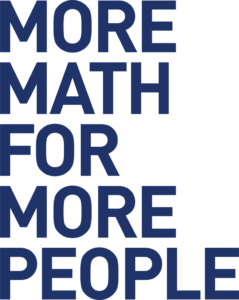
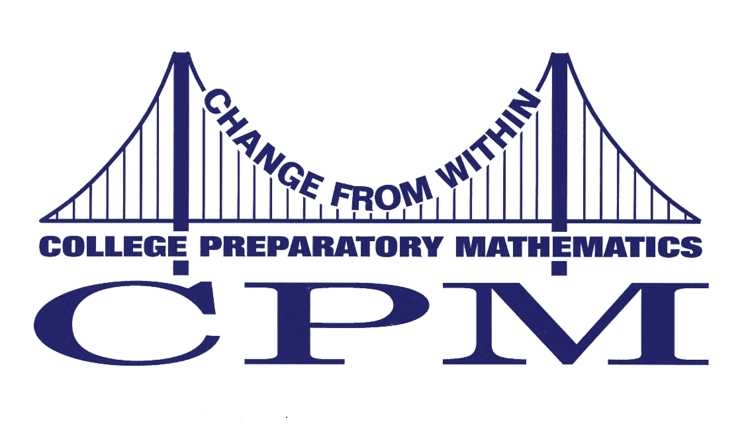
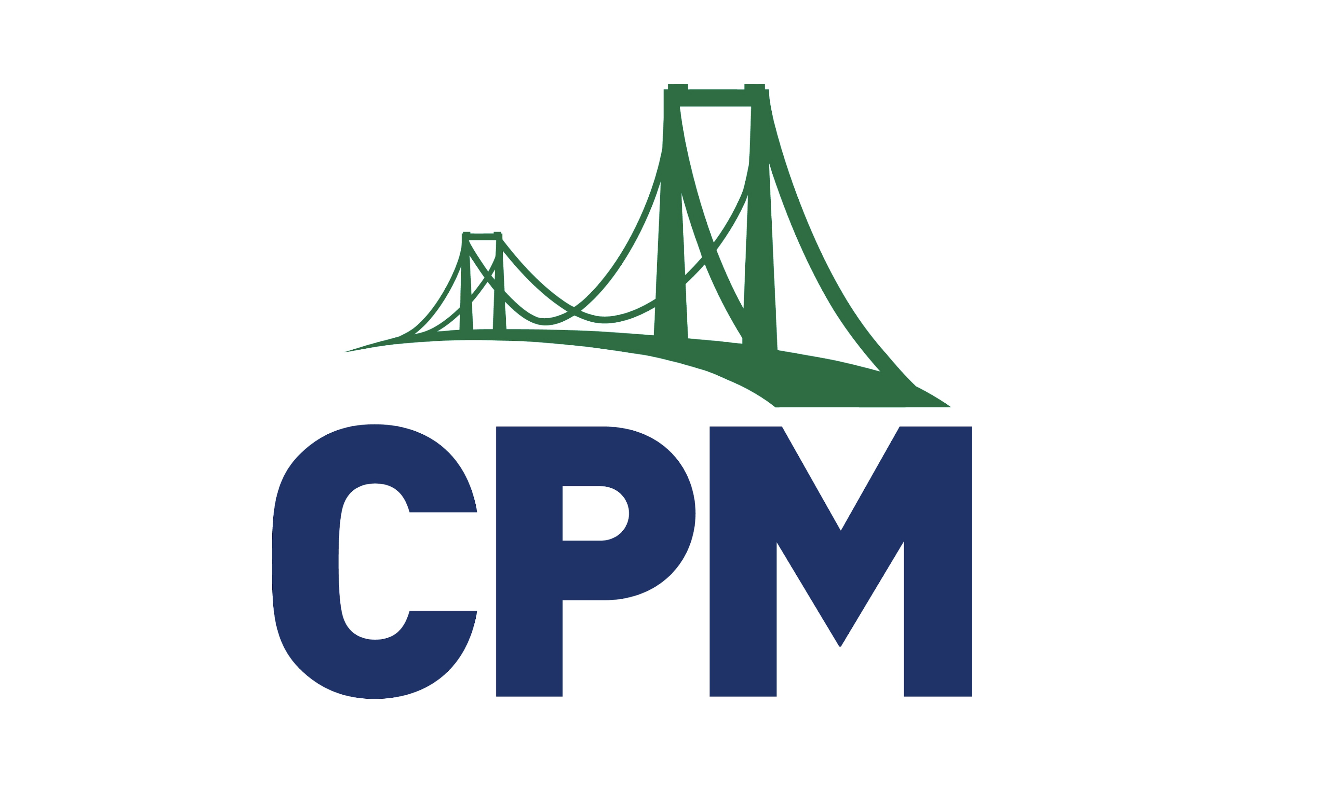
CPM began when a few university professors were awarded two Eisenhower grants. These professors came together with 30 math teachers around Sacramento, California in a grassroots effort to change the way mathematics courses were taught.
Read more below.
As a response to the wide range of curricula that claim to be research based, in 2007, Dr. Clements articulated a framework that outlines phases for the development of research-based curricula (Clements, 2007, Sarama & Clements, 2019). This framework was peer-reviewed and published in NCTM’s prestigious Journal for Research in Mathematics Education. In 2019, Sarama & Clements extended this line of research, arguing:
We need scientific approaches to the conceptualization, design, creation, implementation, and scale-up of curricula that are not just “based on” or “validated by” research but that were constructed, refined, and evaluated with a comprehensive program of research and development…
A curriculum development program should address not only the practical question of whether the curriculum is effective in helping children achieve specific learning goals, but also the conditions under which it is effective. Theoretically, the research program should also address why it is effective and why certain sets of conditions decrease or increase the curriculum’s effectiveness.
A core feature of the [Curriculum Research Framework] is that it is grounded in coordinated interdisciplinary research … to scale-up [across 10 phases]… Each phase must yield positive results to proceed to the next. (pp. 144-145)
While CPM predates this Curriculum Research Framework, it also aligns with many (but not all) of the phases described within the framework. CPM continues to pursue research from multiple domains such as cognitive science, psychology, mathematics education, and the learning sciences to inform curriculum and professional learning design, evaluate the effectiveness of the program under particular conditions at both local and large-scales, and contribute to the field’s understanding of how to best support mathematics teaching and learning at the 6-12 levels.
CPM was born with two Eisenhower grants between 1989 and 1995 when a group of 30 math teachers in and around Sacramento, CA came together in a grassroots effort to change the way mathematics courses were taught. Within 2 years of the first grant, more than 500 teachers were using CPM materials, and within 3 years well more than 1,000 teachers were supported by CPM materials and professional development. By the end of the decade, CPM was a core curriculum in more than 20% of California schools. More importantly, teachers reported that after taking CPM’s Algebra 1 course, students no longer asked “What am I ever going to use this for?” — an indicator of meaningful mathematical experiences.

The original title of the program, established with the first Eisenhower Grant, College Preparatory Mathematics: Change from Within, reflected the growing requirement of algebra around the country as a high school graduation requirement. Change from Within reflected the grassroots of CPM’s design as by teachers, for teachers. The second Eisenhower Grant, College Preparatory Mathematics: Change through Assessment, aimed to support teacher learning around assessment; primarily, that teaching math differently requires assessing differently. The name College Preparatory Mathematics served to reassure teachers and parents that the courses were substantive treatments of these traditional courses and were aligned to state standards. This was especially important as the national “math wars,” especially in California, raged over how to teach K-12 mathematics.
Then, as with today, many mathematics classes — but particularly Algebra 1 — were functioning as a filter, holding many students back from attending college. These teachers took action within their own classrooms to reverse this inequity.

Guided by three founders — two university professors, Drs. Tom Sallee and Elaine Kasimatis, and the then director of the Northern California Math Project and current professor of mathematics education, Judy Kysh — the goal of the group was to make Algebra courses a pump rather than a filter, opening opportunities for more students to attend college. The professors and teachers worked together: Teachers deferred to professors for issues of mathematics; Professors deferred to teachers for issues of pedagogy. Together, the professors and teachers wrote courses and provided professional learning workshops that gradually shifted how mathematics was taught.
During the 1988-89 school year, the group met to discuss the California Mathematics Framework, a precursor to the 1989 NCTM standards. They also discussed research on both constructivism and learning through teamwork. These discussions helped the group understand how students could best learn mathematics. Based on these discussions of research and years of classroom experience, the group distilled what are now known as The Three Pillars of CPM: Collaborative Learning, Problem-Based Learning, and Mixed Spaced Practice
This process of examining existing research encompasses Phases 1–4 of Clements’ framework: CPM is rooted in an analysis of what was known about the relationship between the mathematics content, student thinking, and pedagogy (Phases 1-3). For Phase 4, Clements (2007) suggests that the flow of content in curricula be constructed based on models of students’ thinking and learning generated in formal academic research. Such models of student thinking, often called “learning trajectories,”1 began to emerge in the mid 1990s (Simon, 1995 PDF) Indeed, studies of learning in classrooms rather than in clinical or laboratory settings were just emerging at the time of CPM’s origin, a time when constructivist theories of learning were being newly explored. According to Simon:
“Although constructivism provides a useful basis for thinking about mathematics learning in classrooms, it does not tell us how to teach mathematics. … [Learning trajectories research] contributes to a dialogue on what teaching might be like if it is built on a constructivist perspective on knowledge development. The specific focus of [learning trajectories research in mathematics education] is on decision making with respect to mathematics content and mathematical tasks for classroom learning” (1995, p. 4).
In this way, although CPM’s first materials predate this research, materials were based on models of student thinking generated by the pioneering group of CPM teacher-authors and founders. Discussions between teacher-authors, their colleagues, and founder Judy Kysh about how students responded to the materials and how teachers used the materials led to the iterative refinement of the textbooks’ embedded hypothesized learning trajectories.
To design curricula that spurred student interest, engagement, and learning, the flow of content in CPM’s curricula is grounded in CPM teacher-authors’ experience (collectively, hundreds of years of experience) thinking about students’ mathematical thinking. Even more, the models of students’ mathematical thinking that informed the design of the curriculum were also informed by research. In this way, CPM is based on trustworthy models of students’ thinking that characterize how students progressively construct and refine their understandings of mathematical concepts. The mathematical trajectory of CPM curricula is not arbitrary, but is purposefully designed to support both deep, conceptual mathematics learning and procedural fluency. Described below are three takeaways from research that deeply informed the original development of CPM: Learners construct rather than acquire understandings, Learning is supported by starting with the big picture, and Narrative and mathematical storylines support aesthetic responses.
Research takeaway: Learners construct rather than acquire understandings
The founders and teachers leveraged brain-based research from the 80’s and 90’s on how people think. Some members of the original CPM group attended lectures by Marian Diamond of the Lawrence Hall of Science, and other scholars such as Marny Sorgen (author and former teaching colleague of CPM founder Judy Kysh) gave regular presentations to the group. Constance Kamii’s research on intellectual autonomy was also influential in the original design of CPM. Kamii developed Number Talks, and was one of the first scholars to describe children’s cognition around addition and subtraction, particularly how children construct their own understandings regardless of how they are taught. In this way, CPM’s design helps teachers build on students’ logical thinking to help them construct understandings of canonical mathematical concepts.
Research takeaway: Learning is supported by starting with the big picture
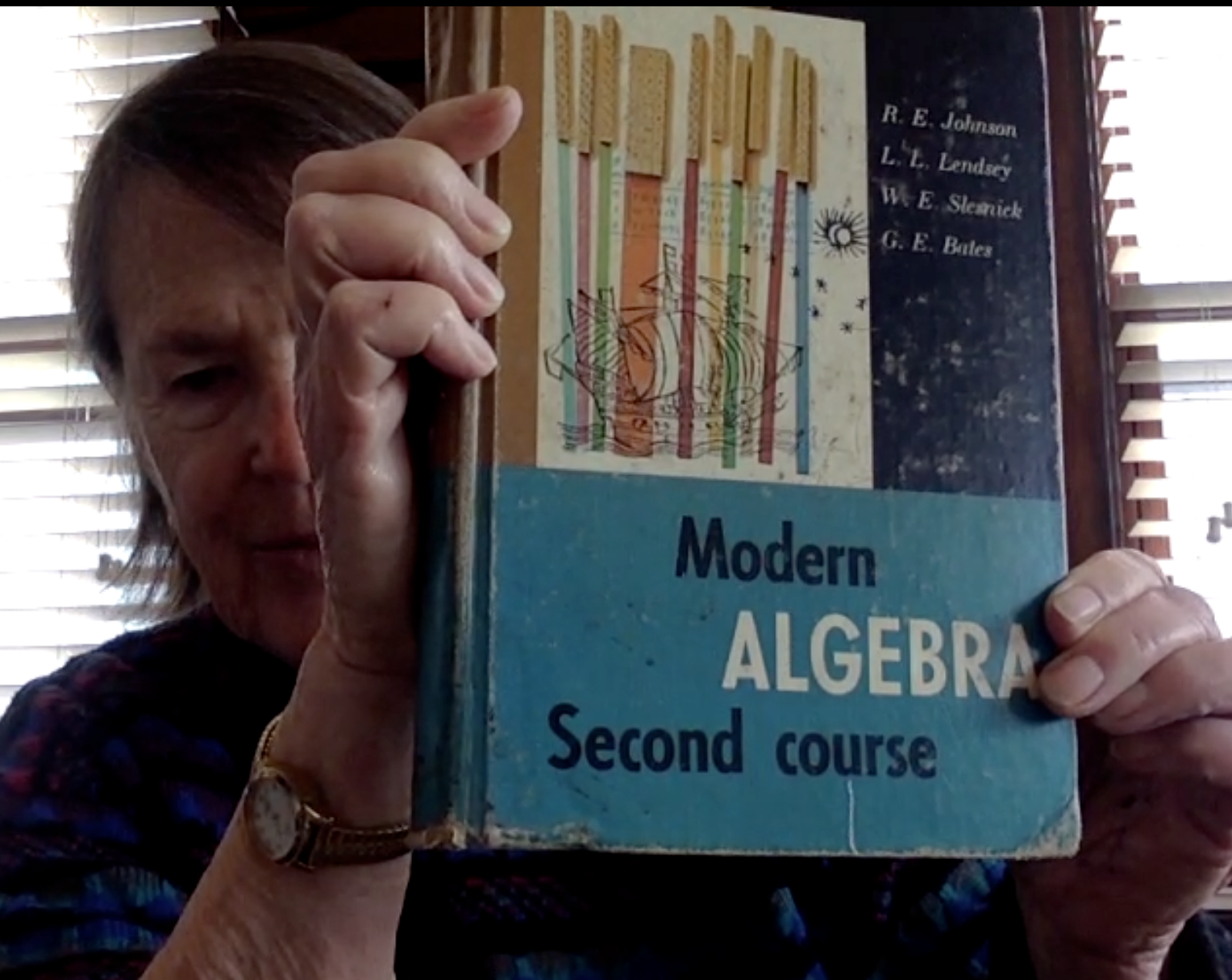
From reading, attending conferences, and soliciting researchers to give presentations on their findings, the group formed another key takeaway: Students learn mathematics best when they start with a big picture that has some sort of mystery to be uncovered. Beyond being supported by research, the veracity of this principle of learning was experienced first hand by some of the original group. For example, founder Judy Kysh cites an Algebra textbook written by Johnson, Lendsey, Sleznick, and Bates (an Addison Wesley book) as having deeply influenced her thinking. Unlike most texts of the day that had problems that could not be successfully completed without first examining pre-worked examples, in this text, learners could solve new problems by reasoning about what they had done in prior problems. A lot of problems in CPM’s original text were inspired by the Johnson and colleagues textbook, pictured right. They were also inspired founder Judy Kysh’s (then Judy Salem) work on a Scott Foresman (a bygone publisher) Algebra 1 and Algebra 2 textbook series (copyright 1984) in which each chapter began with a real problem, and by the end of the chapter enough math had been developed to solve the opening problem. Following this inspiration, CPM chapters were originally named for their real-world big problems, rather than for the mathematics in them. Anecdotal evidence from student portfolios and interviews suggested students remembered the mathematics by the problem that they encountered it in, and this helped them solve similar problems in other contexts.
Research takeaway: Narrative and mathematical storylines support aesthetic responses
Over the years, building on more recent research, CPM materials have developed to not only use big problems, but even more, to develop both narrative and mathematical storylines (e.g., Dietiker, 2013, 2016, 2019). CPM’s textbooks are designed such that the mathematics storyline and the narrative storyline go hand in hand, one does not serve the other. In CPM texts, students encounter situations with an enigma— something that students will not yet know how to resolve. The mathematics in the texts was and is organized so that students experience ah-ha moments— so that students experience aesthetic dimensions of mathematics, such as feelings of curiosity and surprise as they construct mathematical connections and elegant solutions.
From the peer-reviewed academic research described above, CPM synthesized three design principles that have since become known as The Three Pillars of CPM: Collaborative Learning, Problem-Based Learning, and Mixed Spaced Practice. Grounding the curriculum in these three pillars, the group wrote a new set of Algebra 1 material (aka Math 1) in five weeks in the summer of 1989, with an additional smaller team editing and polishing. Then, during the 1989-90 school year, the teachers who worked on the materials piloted them and took notes on how to improve them. They met nearly every month of the year to share and create a collective record of their experiences teaching with the materials. After this pilot, the teachers revised the Algebra 1 materials and created the first Geometry text (aka Math 2) in the summer of 1990, then piloted the Algebra 1 materials for a second time and the Geometry materials for the first time in the 1990-91 school year. An Algebra 2 text (aka Math 3) was written a few years later, beginning in the summer of 1992, then undergoing two rounds of field-testing and review, and settling on the final first edition in the summer of 1994.
Back in those days, the text materials were distributed by chapter as shrink-wrapped stacks of loose leaf pages from the back of a van that founder Judy Kysh drove to a central location. Teachers drove there to get their pages, engaged in professional development together for the entire day, and then took the materials back to their schools for copying. Most teachers distributed a unit or chapter at a time.
In 1993 when the quantity of materials began to exceed the capacity of Judy’s van (borrowed from a university), CPM incorporated as a California nonprofit corporation so that soft-bound versions of Algebra and Geometry could be printed and sold. Teachers no longer had to copy and distribute materials at their schools.
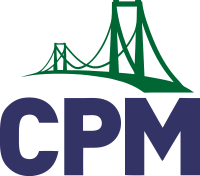
CPM incorporated as “CPM Educational Program,” not “College Preparatory Mathematics.” CPM incorporated as CPM Educational Program instead of College Preparatory Mathematics because it was commonly known as CPM. In addition, feedback from teachers revealed that all students—not only college bound students—benefited from learning with CPM materials. Consequently, the courses and teacher professional learning opportunities were, from then on, known simply as CPM.
Many of CPM’s transformational professional learning experiences—such as the Academy of Best Practices and the Teacher Researcher Corps—are made possible by funds from textbooks.
From its inception, CPM was grounded in research, designed in the spirit of the standards, and was known by those who adopted it to support rigorous mathematics learning for both career- and college-bound students. Yet, for years, there was no official summary of research that supported the curricula’s design. After much anticipation, in 2013, one of the founders, Dr. Tom Sallee, formalized the CPM Research Base by conducting a literature review around CPMs Three Pillars. This 2013 CPM Research Base Report does not encompass all of the a priori research done by the three founders and the 30 teachers who created the curriculum, but it does encompass evidence that CPM’s Three Pillars support mathematics learning.
The soundness of CPM’s research-based design has been affirmed in external reviews. In 1999, the US Department of Education selected CPM as one of the top twelve reform-based mathematics curricula (source). Five mandatory criteria were used to evaluate the texts: engage students in mathematical inquiry, focus on mathematical content, be appropriate for high school students, use information technology for inquiry teaching and learning, and be supported by research.
CPM continues to be recognized as an exemplary curriculum. In 2013-2014, the California State Board of Education (CA BOE, 2013-2014) reviewed CPM with its curriculum alignment tool, which is similar to the Instructional Materials Evaluation Tool — a rigorous Common Core-aligned curriculum evaluation tool2 developed by one of the principal authors of the CCSSM standards (Jason Zimba, Achievethecore.org). The review investigated CPM’s middle grades courses and Core Connections Algebra for (1) mathematical alignment with the standards, (2) program organization, (3) assessment, (4) universal access, (5) instructional planning, and (6) teacher support. This review resulted in CA’s adoption of CPM for grades 6-8 and Algebra, which then led many local school districts to conduct independent reviews using their own criteria. Some of these reviews expanded beyond the materials reviewed by the CA BOE, including Geometry, Algebra 2, and Integrated I, II, and III.
Finally, CPM’s middle school series (Core Connections 1-3) and both high school pathways (Traditional and Integrated) have been reviewed by EdReports. Both high school pathways received the highest rating of meets expectations. The Core Connections middle school series received good reviews.3 According to EdReports,
“The [Traditional and Integrated high school] materials attend to the full intent of the mathematical content standards and also attend fully to the modeling process when applied to the modeling standards. The materials also meet the expectations for rigor and the Mathematical Practices as they reflect the balances in the Standards and help students meet the Standards’ rigorous expectations and meaningfully connect the Standards for Mathematical Content and the Standards for Mathematical Practice.” (Source for Integrated and Traditional high school series, see more Independent Reviews from EdReports and others as linked on CPM’s website.)
Due to CPM’s performance on independent reviews and strong reputation for supporting standards-based instruction, CPM was solicited by scholars at universities across the US to collaborate on the 2020 Gates Foundation Grand Challenge for Algebra 1, Balancing the Equation.
Today, CPM’s diversely qualified team is still guided by some of the original teachers who helped research, write, field-test, and revise the first versions of the curriculum. Holding true to its roots, CPM values and supports teachers as curriculum writers, teacher-researchers (TRC), and professional learning leaders (RPLCs) — and also has a research department that supports these efforts. Currently, CPM is looking into implementation and impact studies that account for its programmatic theory as another way to buttress its research base, although these may be delayed by COVID-19.
These future studies will meet the last six phases of the framework for research-based curricula. The last five phases include investigating the curriculum’s effectiveness with various student groups and teachers and investigating how it can be improved to serve diverse situations and needs.
CPM also funds non-evaluative external research as part of its CPM Research Grants Program, which aims to support research that contributes to the broad mathematics education community. Research from this program has contributed to both theory and practice in mathematics education, thus contributing to meeting two of the three emphases of the framework — theory, practice, and policy.
While materials are no longer distributed out of the back of a van, CPM’s dedication to translating research into practice, and commitment to the founding pillars of Collaboration, Problem-Based Learning, and Mixed Spaced Practice are still at the heart of CPM. With each new edition and series, CPM draws on available research to determine how to best support teachers to be successful in helping all students learn mathematics deeply, usefully, and permanently.
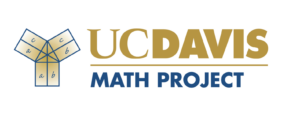
CPM originated in conjunction with two Eisenhower Grants and the Math Project.
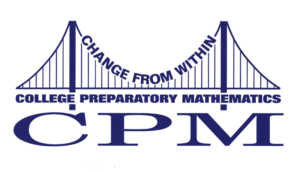
Learn about how our research base started, our results, and efforts to support more educators!
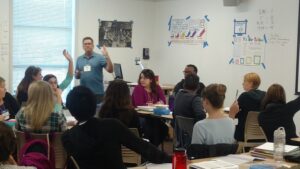
CPM has its first Summer Leadership Institute.
Participate in our engaging and teacher-led initiatives!
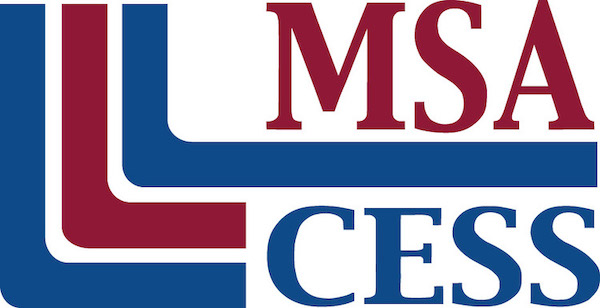
CPM Professional Learning is officially accredited by the Middle States Association Commission on Elementary and Secondary Schools (MSA-CESS).
Learn more about our accreditation process and how you can earn continuing education credits through us!
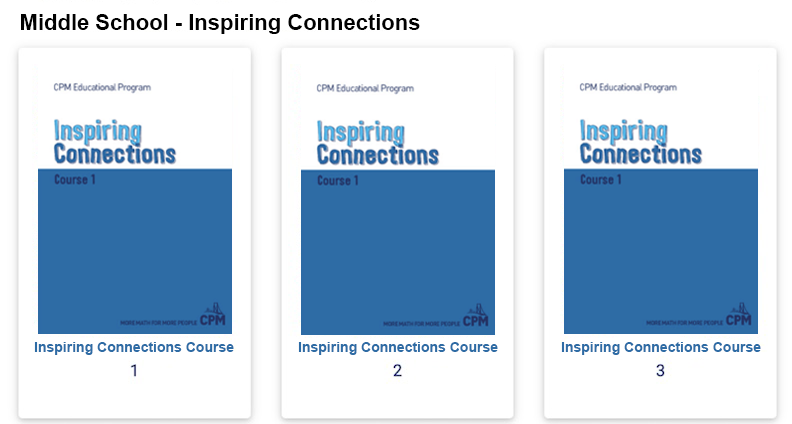
The Inspiring Connections middle school courses are standards-based and organized around engaging, team-worthy, non-routine problems.
Learn more about this new middle school curriculum.
© 1989-2025 CPM EDUCATIONAL PROGRAM All rights reserved. CPM Educational Program is a 501(c)(3) educational nonprofit corporation.